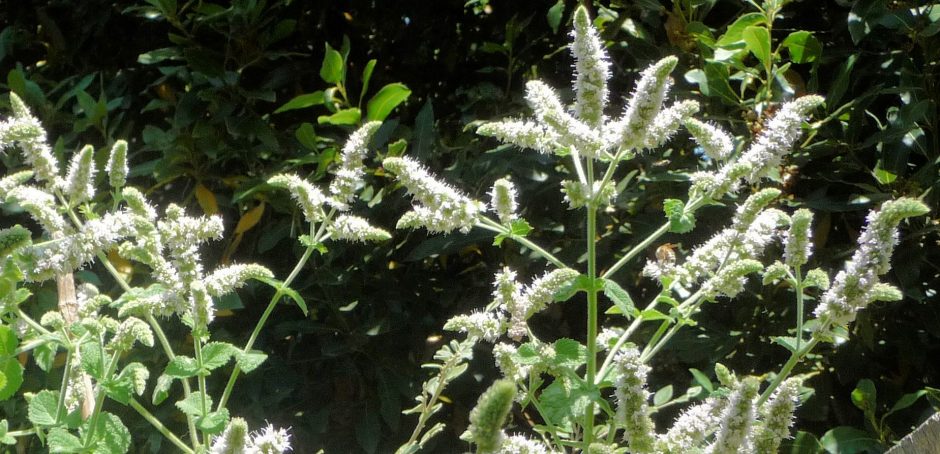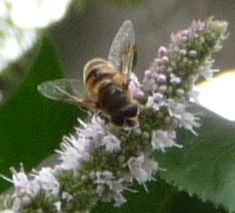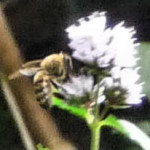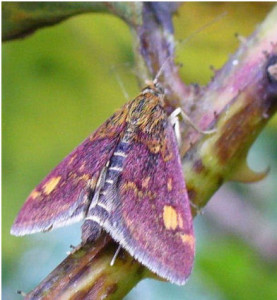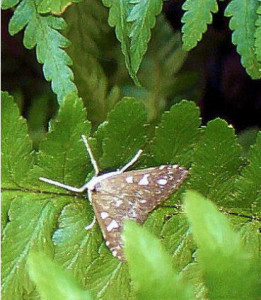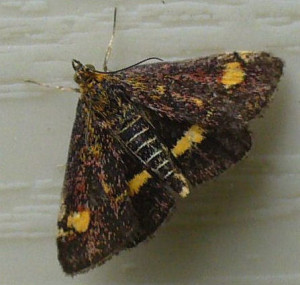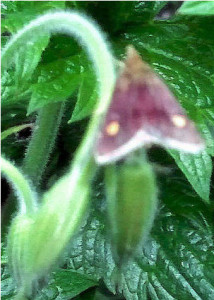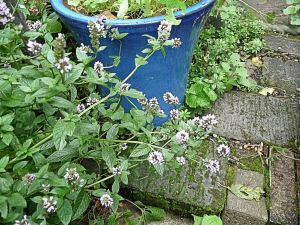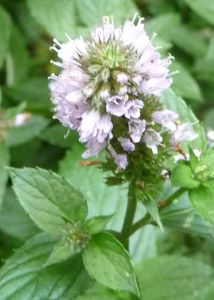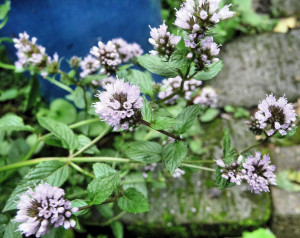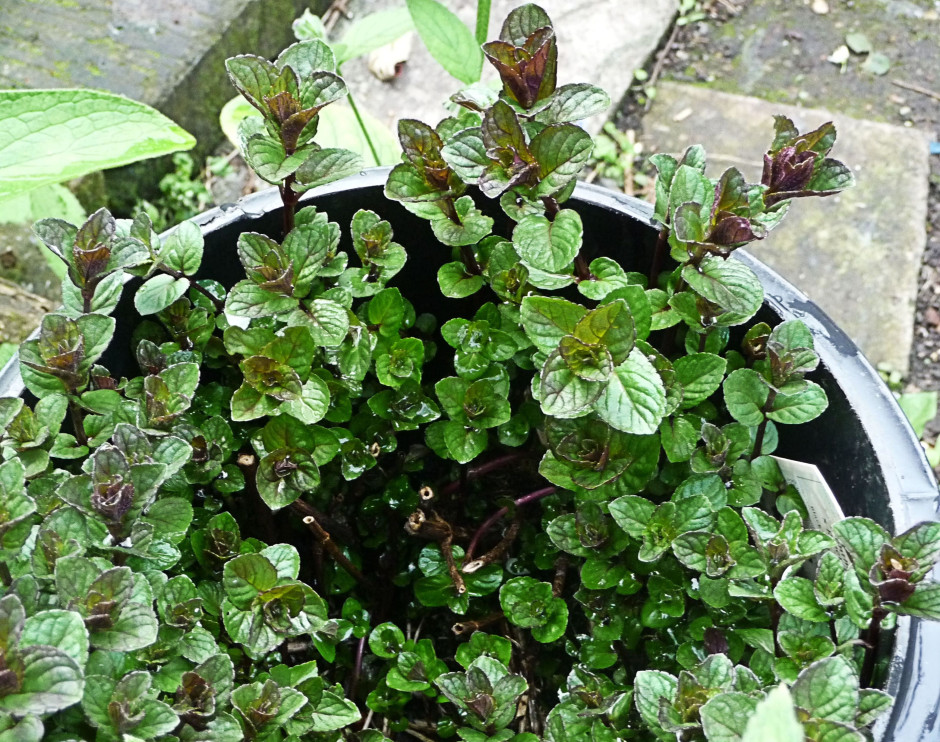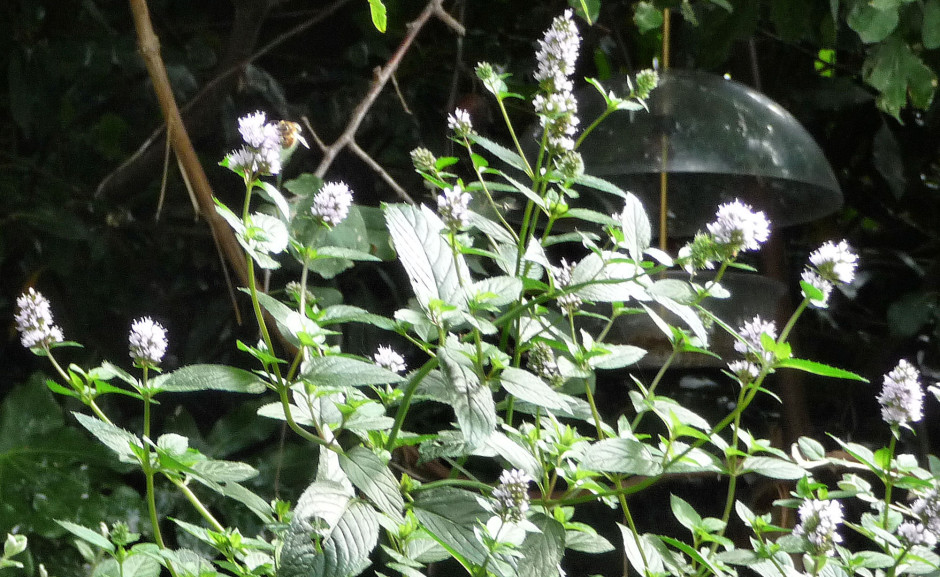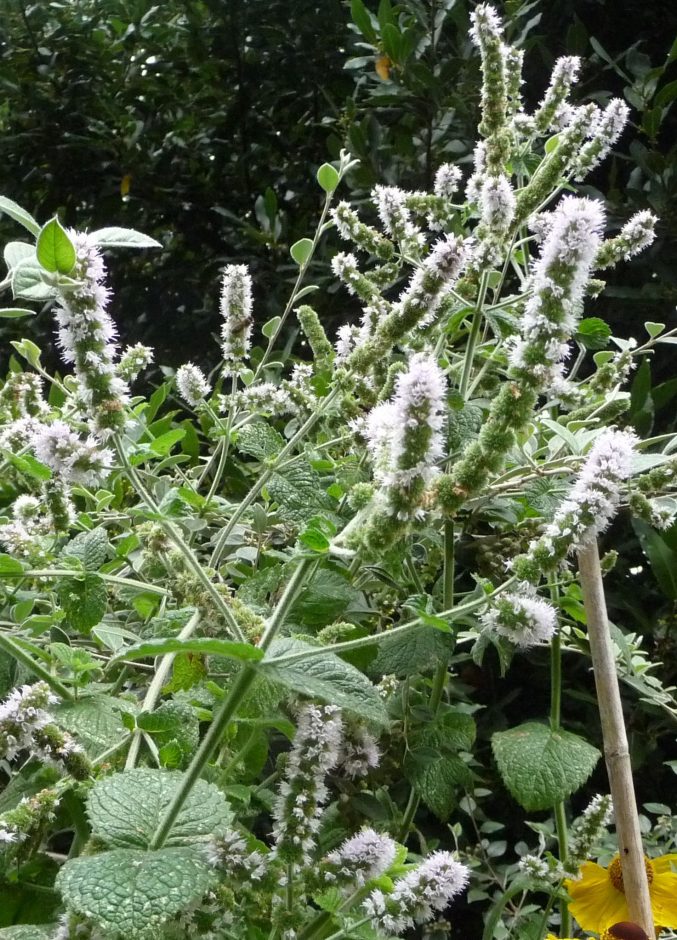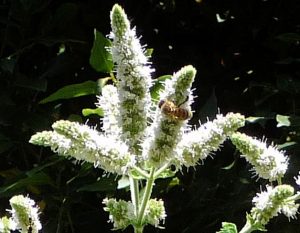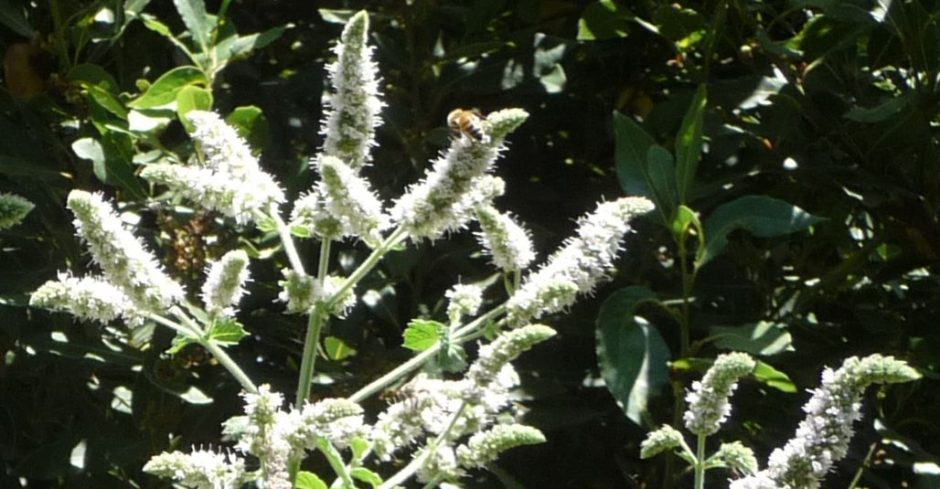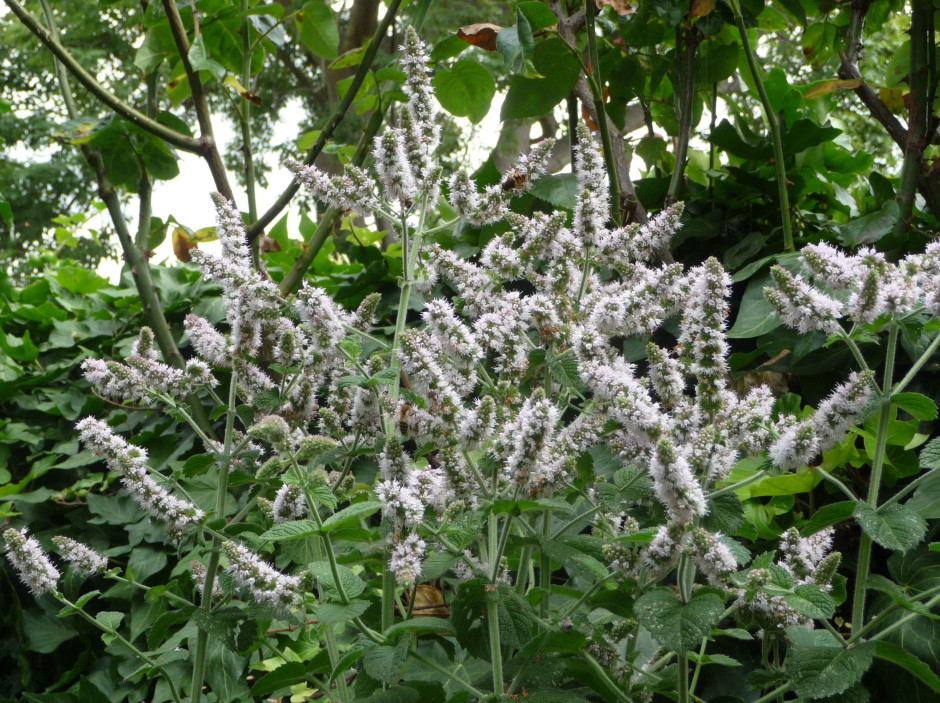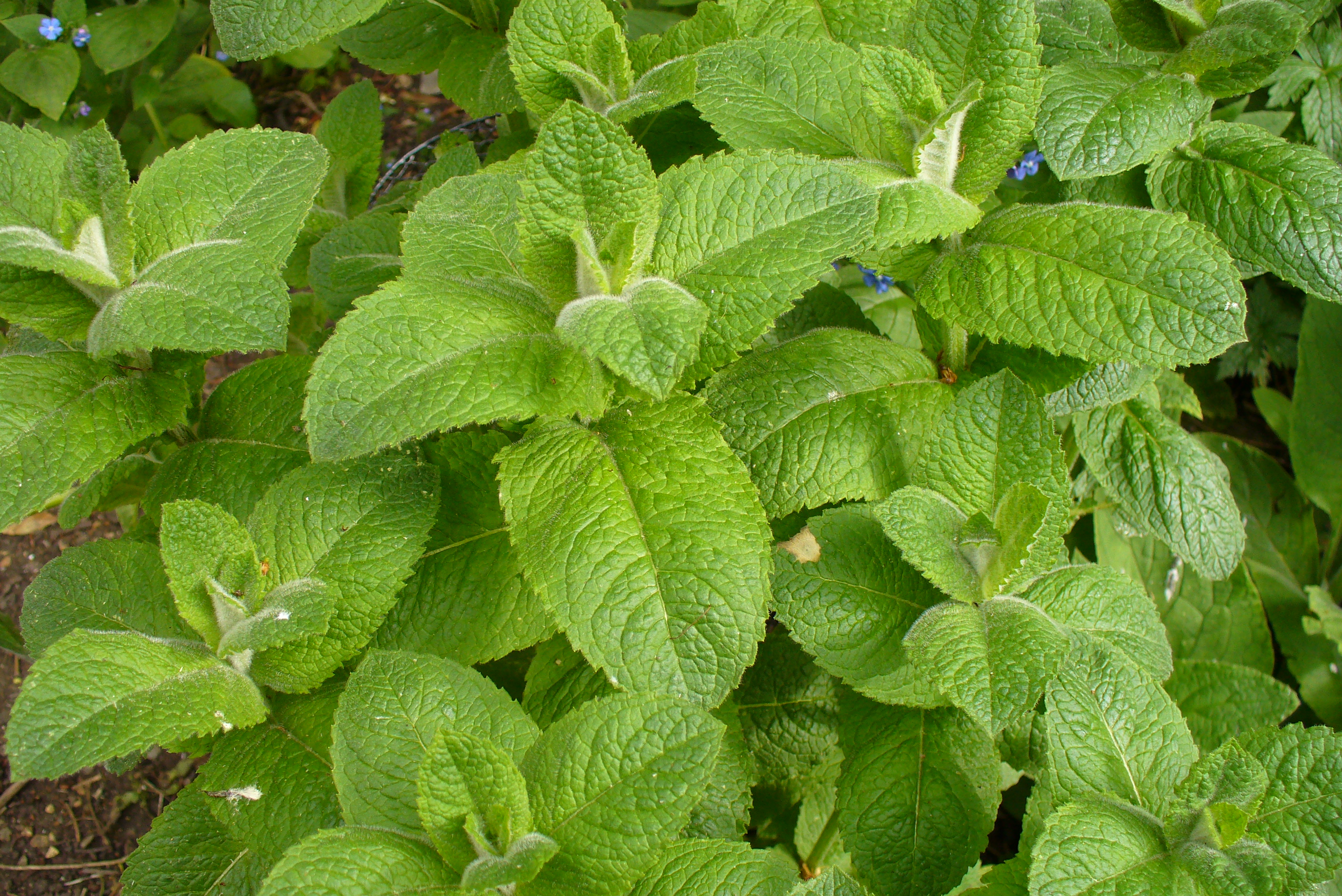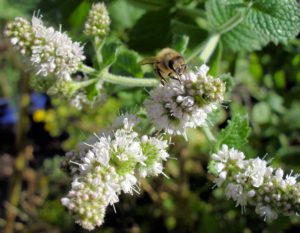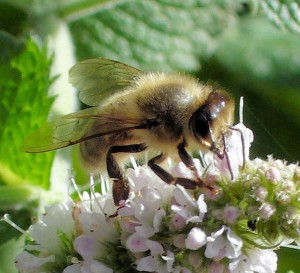MINT (Mentha)
Europe, Africa, Asia, Australia & N America
Mints are aromatic, usually perennial herbs. The Mentha family is a worldwide one, with 13 to 24 species. Most prefer moist, fertile, well-drained soil in partial shade. In our North London garden, all plant growth above ground level dies back in winter, regrowing in spring.
‘the Mints have a biting, aromatick bitterish Sapor with a strong fragrant Smell abounding with a pungent Volatile Salt and a Subtil Sulphur which destroyeth Acids, and herein doth lodge the Causation of such medicinal Virtues in this Herb and others of the like Nature.’
Dr Westmacott, 1694, quoted by Maud Grieve in A Modern Herbal, 1931.
Warning : Can Be Invasive
Its vigorous roots can make this species an invasive one. A mint should be planted either above ground in a container, or with the container sunk into the ground.
Historical, Culinary
Mints were historically used as strewing herbs, spread over floors to be walked on, thus releasing their scent. They were also used medicinally, as a natural insect repellent & as flavouring for food.
“all kinds were used in food and medicine. Mint vinegar was used as a mouthwash; mint sauce restored the appetite. Used for all stomach ailments, in fevers and in treating venom and wounds. Wilfred Strabo [Abbot of Reichenau, scholar & theological writer] said in the 10th century that there were as many types of mint as the sparks that fly from Vulcan’s forge– in other words, lots!”
http://www.gallowglass.org/jadwiga/herbs/teen.htm
Mint has also played an important part in history; in the Bible the Pharisees collected tithes in mint, dill and cumin; Charlemagne ordered people to grow it; and the Romans brought it with them as they marched through Europe and into Britain. Jekka McVicar, Jekka’s Guide to Mint, https://www.jekkas.com/pages/jekkas-guide-to-mint-mentha
In the Victorian Language of Flowers mints were seen to symbolise ‘virtue’.
Bees’ favourite.
Mint flowers are irresistable to bees. Our two longtime resident mints, Apple Mint & Black Peppermint, have been bringing them in for years.
We tried growing Calamint, a native wild mint from the UK, in open ground one year. It has ACID GREEN leaves & PALE BLUE flowers dotted singly along its stems. Sadly, winter weather finished it off. We have had success, however, with growing other mints in containers.
Furry, triangular little Mint Moths (above) appeared soon after our mints were planted out, & are now part of the life of the garden.
(Mentha x piperita)
This is a cross between Spearmint (White Mint, native to Europe) and Water Mint, hybridised in the London area shortly before the eighteenth century. Small spires of tiny, WHITE/PINK flowers appear in mid to late summer on tall stems of Mentha x piperita. Intense fragrance is released when contact is made with its leaves.
Other names: Lammint
VIDEO – BUMBLEBEE, MINT MOTH ON BLACK PEPPERMINT
APPLEMINT
(Mentha suaveolens)
Europe, Mediterranean, Africa & Asia
The aromatic Applemint has large, soft rounded leaves on tall stems that grow to over one metre (36 inches) & will require staking. Sweetly scented leaves & stems are covered with a soft, furry down. In June, spires of tiny WHITE flowers appear at the stem tips, which look as though they are coated with icing sugar.
Bees’ Favourite.
The flowers of Mentha Suaveolens are visited by Bumblebees, Mint Moths and other pollinators.
Other names: Round-leaved mint, Wooly mint, Pineapple Mint.
Companion Planting
The leaves of our Applemint are sometimes coated in powdery mildew by summer’s end. One year the plant blew over in high winds before it could be staked, leaning into foliage & flowers of Hardy Geraniums ‘Wargrave Pink’ & ‘Buxton’s Variety’. The powdery mildew never got to it. Free of pests & diseases, the Hardy G’s apparently helped a neighbour resist powdery mildew.
Health Benefits
Beneficial for fever, headaches, digestive disorders, acne, colic, cramp, colds, flu, stress, shock, asthma, travel sickness, fatigue, epileptic seizures. Google
This herb was often found growing on the ruins of old monasteries. The monks had used it for curing epileptic fits since it was considered refreshing for the brain. In early times, the Greeks used apple mint to clean their banqueting tables and also added it to their baths to rejuvenate their bodies. Anindita Roy, Only Foods, 2013. https://www.onlyfoods.net/apple-mint.html
At the Anglo Saxon Herb Garden of Cambridge University’s Lucy Cavendish College, mints and other herbs found to have been used before 1066 are used in the planting.
http://www.lucy-cav.cam.ac.uk/assets/images/LCC_Herb_Garden_DL_Leaflet.pdf
